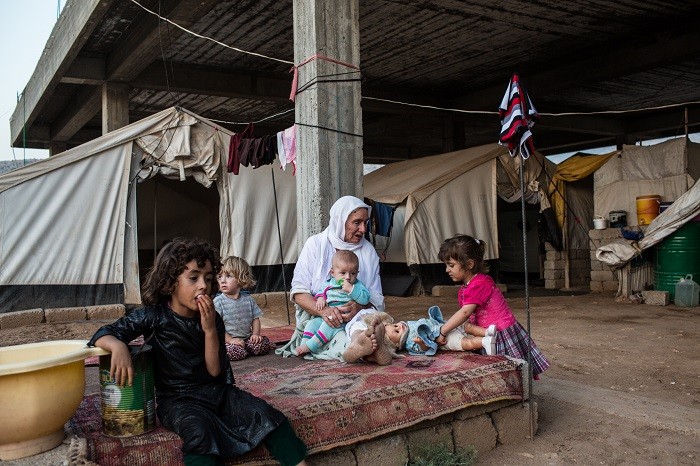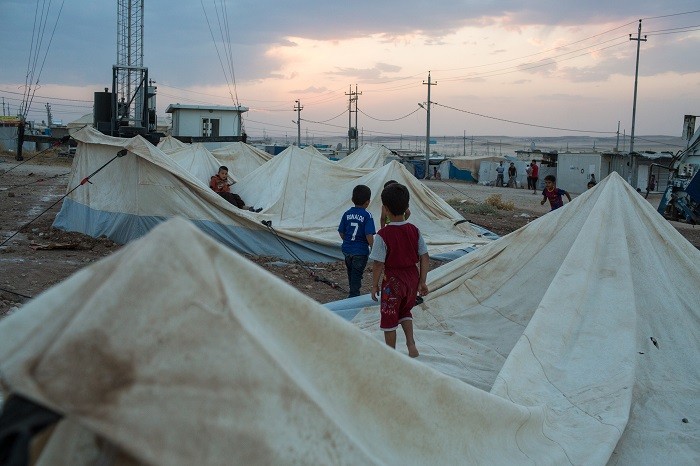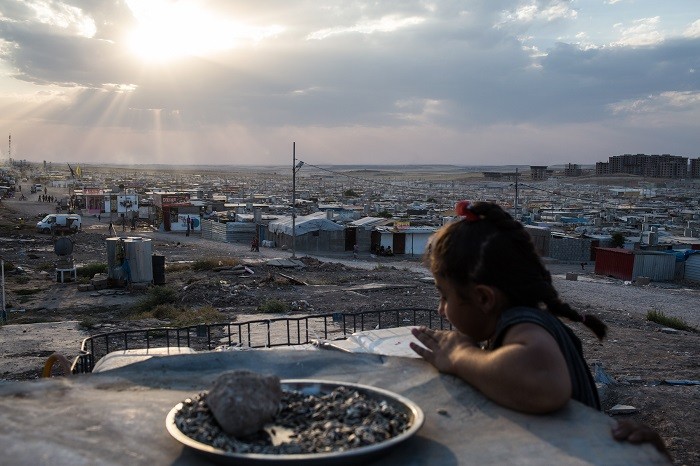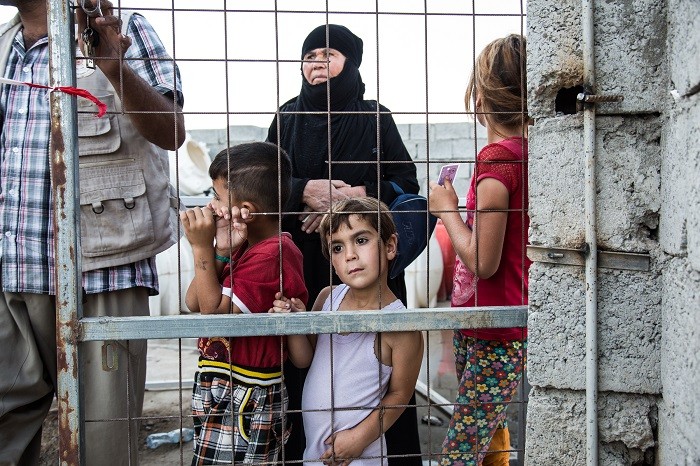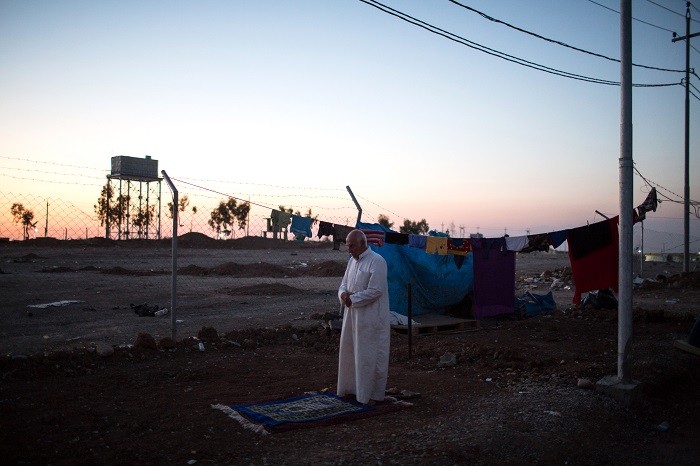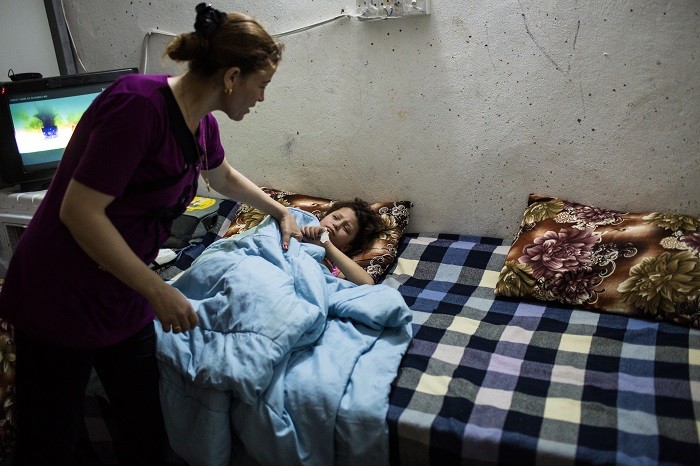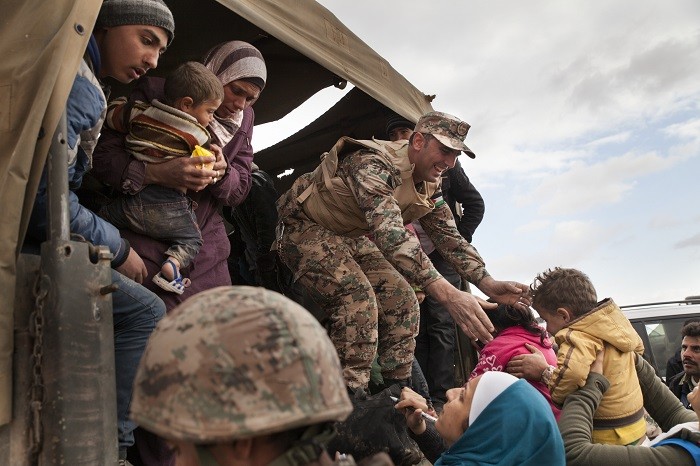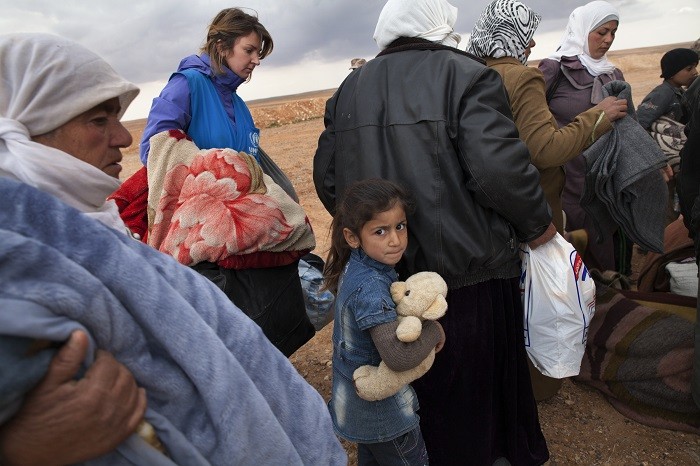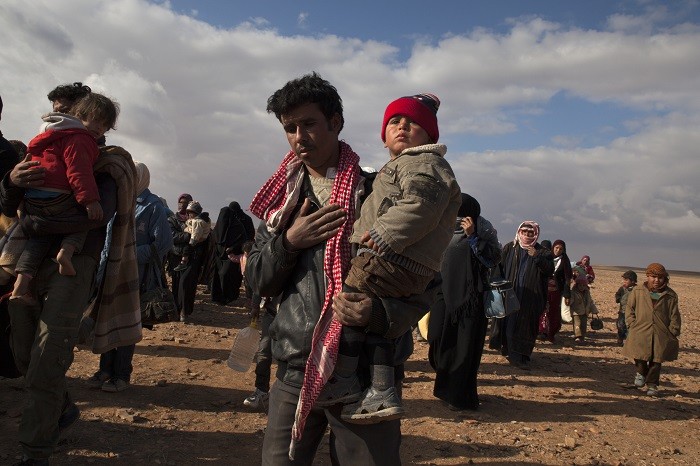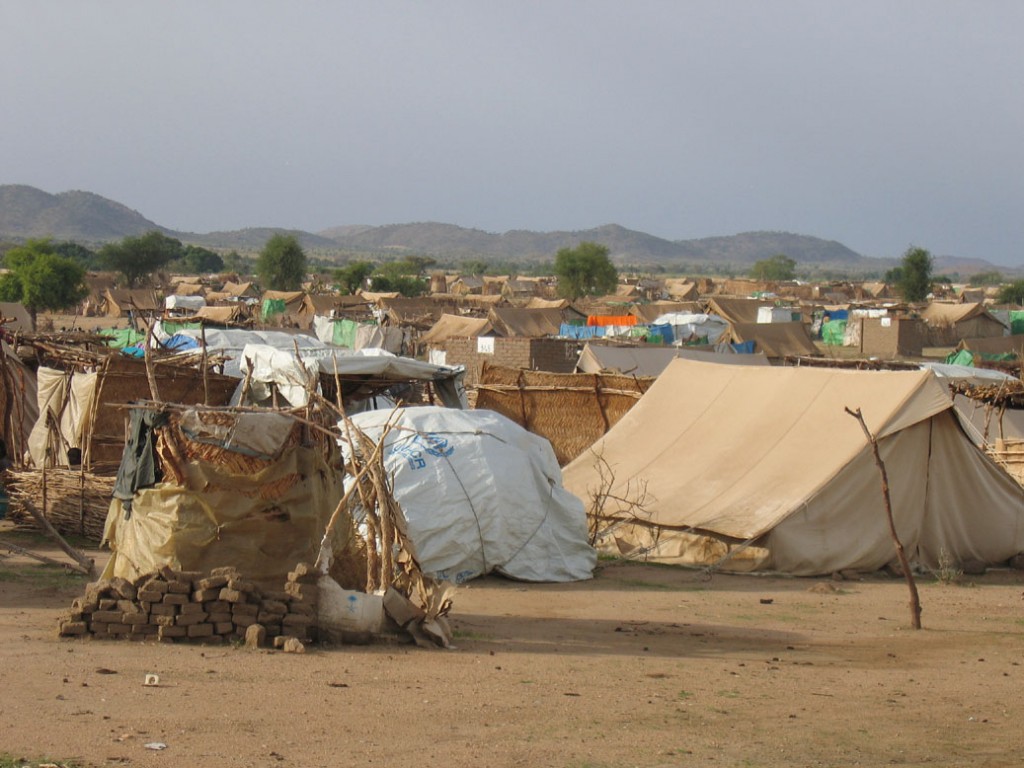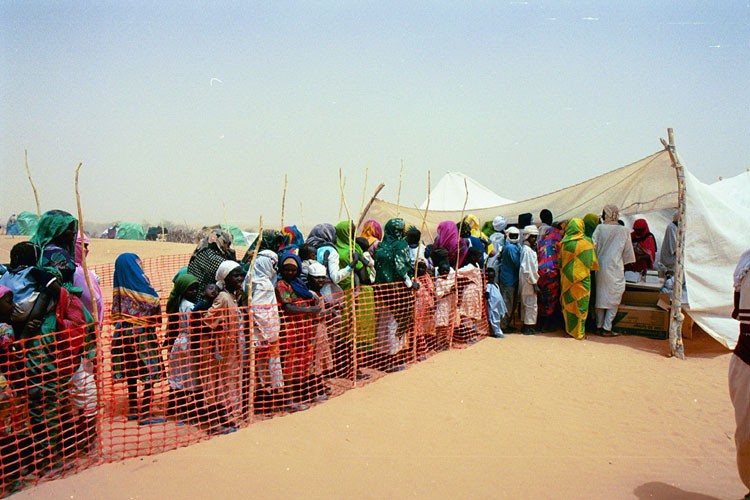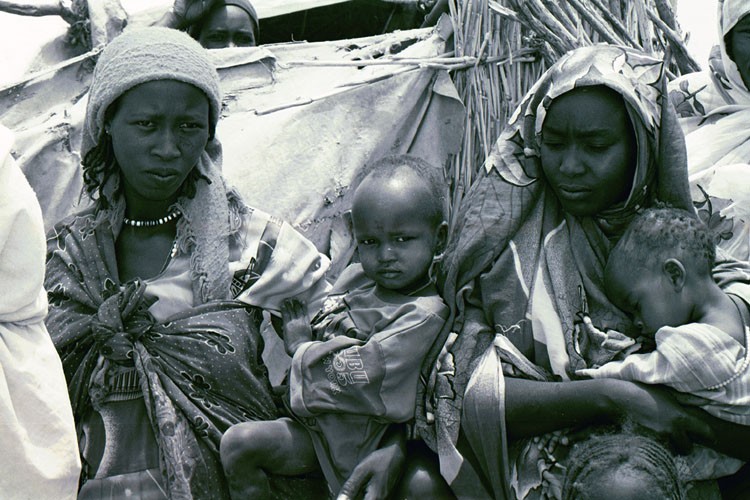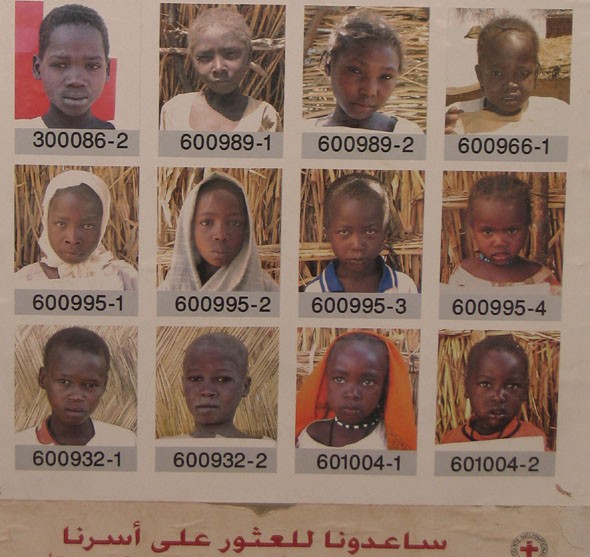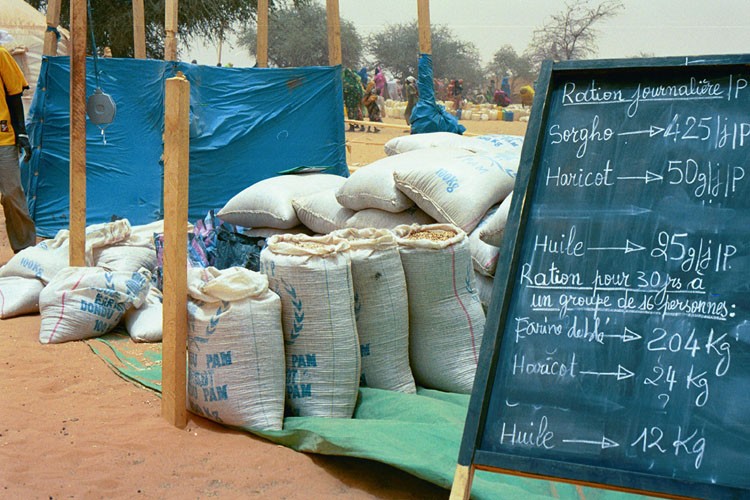
Refugees Today
Today's refugee crisis is the product of conflicts that involve mass atrocities and human rights violations. Although the international refugee protections that followed World War II established the plight of refugees as the responsibility of the international community, countries worldwide have a long way to go to live up to their international obligations.
Key Facts
-
1
As of mid-2022, more than 84 million individuals were forcibly displaced from their homes. About 27 million of these people were refugees.
-
2
The Refugee Convention defines refugees as persons who 1) are outside their native country or country of habitual residence and 2) cannot return to their country or call on its protection because they fear that they will be persecuted on the basis of race, religion, nationality, membership in a particular social group, or political opinion.
-
3
People fleeing Syria, Burma, and South Sudan accounted for more than a third of all refugees in mid-2022.
The United Nations Refugee Agency estimated that as of mid-2022 more than 84 million individuals were forcibly displaced from their homes. About 27 million of these people were refugees. The others remained displaced within the borders of their countries as internally displaced persons; had no official citizenship in any country; or were waiting for another country to process their request for sanctuary. Over 40 percent of displaced persons globally were under the age of 18.
People fleeing three countries—Syria, Burma, and South Sudan—accounted for more than a third of all refugees in mid-2022. In addition, large numbers of displaced persons have fled atrocity crises in recent years in the Central African Republic, the Democratic Republic of the Congo, and Iraq, among others. The refugee crisis caused by Russia’s invasion of Ukraine in February 2022 generated more than 3.6 million refugees in a single month.
Refugees, Crimes against Humanity, and Genocide
Episodes of large-scale crimes against humanity and genocide have triggered many of the world’s largest refugee crises, as evidenced by events in Syria, Burma, and Iraq.
Since the outbreak of the Syrian uprising and civil war in 2011, more than half of all Syrians have been displaced from their homes. Over 6.6 million persons have fled the country amidst war crimes and crimes against humanity, including persecution, torture, enforced disappearances, and murder. These crimes have been committed by the Syrian regime, as well as by extremist forces, including the self-proclaimed Islamic State (ISIS). In addition to the millions of refugees, more than 6 million people are internally displaced within Syria.
In Burma, more than 700,000 Rohingya, a Muslim minority group, have fled to neighboring Bangladesh since August 2017. There, they live in overcrowded camps. In December 2018, the United States Holocaust Memorial Museum determined there was compelling evidence that genocide had been committed in Burma against the Rohingya. In March 2022, the US Secretary of State formally affirmed this finding.
Hundreds of thousands of Iraqis fled the campaign of religious persecution and mass murder waged by the self-proclaimed Islamic State in northern Iraq in 2014. In November 2015, the United States Holocaust Memorial Museum published its findings that the self-proclaimed Islamic State had committed genocide against the Yezidi and widespread crimes against humanity against other religious communities, including both Christian and Muslim groups.
Refugees and International Protections
In the aftermath of World War II, the international community was faced with hundreds of thousands of displaced persons. Recognizing their moral failure to help Jews and others fleeing Nazi persecution before World War II, world leaders made important commitments to assist and protect refugees.
In 1948, the United Nations adopted the Universal Declaration of Human Rights. The Declaration recognizes the right of every individual to seek and enjoy asylum from persecution. In late 1950, the UN established the Office of the United Nations High Commissioner for Refugees, also known as UNHCR or the UN Refugee Agency. UN member states also adopted the Convention Relating to the Status of Refugees in 1951. The Refugee Convention established the basic international obligation not to return people to countries where their life or freedom might be threatened. In 1968, the United States became a party to a new appendix, or protocol, of the Refugee Convention. The rights and responsibilities outlined in the 1951 Convention had addressed the situation of refugees in Europe after World War II. However, the new 1967 protocol formally expanded international legal protections to refugees from other conflicts outside Europe and beyond the immediate postwar period.
The Refugee Convention defines refugees as persons who are:
- outside their native country or country of habitual residence, and
- cannot return to their country or call on its protection because they fear that they will be persecuted on the basis of their “race, religion, nationality, membership in a particular social group, or political opinion.”
The convention provides refugees a wide range of legal protections under international law. These include freedom of association, the right of legal redress, and protection from discrimination.
These landmark commitments established the plight of refugees as a responsibility of the international community. They continue to shape policy today.
Internally Displaced Persons (IDPs)
Not all persons forcibly displaced from their homes are refugees under international law. Internally displaced persons (IDPs) are people who have fled their homes, perhaps for the same reasons as refugees, but have not left the country in which they have been living. Under international law, IDPs technically fall under the protection of their own government, even if that government is responsible for their displacement.
By the middle of 2021, over 48 million people were classified as IDPs. Individuals who have crossed an international border fleeing economic misery or natural disasters, such as floods, earthquakes, and drought, also do not qualify for refugee status. As a result, such persons do not receive the same legal protections as refugees.
The Global Impact of the Refugee Crisis
Today's refugee crisis is the product of conflicts that involve mass atrocities and human rights violations. The vast majority of current refugees are in countries neighboring their homelands. For example, 85 percent of registered Syrian refugees in 2021 were still in the neighboring states of Turkey, Lebanon, Jordan, and Iraq. Lebanon alone, with a population of 4.3 million in 2011, hosted 1.5 million Syrian refugees. Uprooted from their homes, communities, and cultures—and often traumatized by their experiences—some refugees also seek to move on to more distant countries where they hope for the opportunity to lead safe and productive lives.
Such large inflows of refugees put serious strains on host countries' resources. In addition, large inflows of refugees can raise national and regional tensions that may have far-reaching consequences. In Europe over the last decade, the influx of refugees and an even larger number of migrants has contributed to a rise in support for far-right groups, racism, and xenophobia.
The system of international protections for refugees is one positive byproduct of the world’s reckoning with the failure to protect Jews and others who had fled Nazi persecution. The current scale of the global refugee crisis, however, is a stark reminder that as long as violent conflicts and atrocity crimes continue, large numbers of people will flee in search of safety.
Footnotes
-
Footnote reference1.
UN Refugee Agency, “Refugee Statistics,” accessed March 24, 2022, https://www.unhcr.org/refugee-statistics/.
-
Footnote reference2.
UN Refugee Agency, “Ukraine Refugee Situation,” accessed March 24, 2022, https://data2.unhcr.org/en/situations/ukraine.
-
Footnote reference3.
UN Refugee Agency, “Syria emergency,” accessed March 24, 2022 https://www.unhcr.org/en-us/syria-emergency.html.
-
Footnote reference4.
UN Refugee Agency, “Rohingya emergency,” accessed March 25, 2022 https://www.unhcr.org/en-us/rohingya-emergency.html.
-
Footnote reference5.
UN Refugee Agency, “Iraq Refugee Crisis,” accessed March 25, 2022, https://www.unrefugees.org/emergencies/iraq/.
-
Footnote reference6.
Benjamin Thomas White, “From the 1951 Convention to the 1967 Protocol: How the Refugee Regime was Globalized,” Refugee History, December 9, 2021, http://refugeehistory.org/blog/2021/12/9/from-the-1951-convention-to-the-1967-protocol-how-the-refugee-regime-was-globalized.
-
Footnote reference7.
UNHCR, “The 1951 Refugee Convention,” March 30, 2022 https://www.unhcr.org/1951-refugee-convention.html.
Critical Thinking Questions
How has international law about refugees evolved since the Holocaust?
What pressures and motivations may affect decision makers and citizens in another country considering how to respond to a refugee crisis?
What responsibilities do (or should) other nations have regarding refugees from oppressive regimes?


